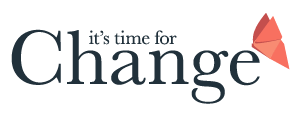Where People & Processes Meet: The Human Angle
Lisa, a chartered psychologist, and James, a strategy and process consultant, are discussing motivation problems in the organisation he is working with.
Lisa: What have you been supporting the company with?
James: The company asked me to help them with bringing two businesses together. It’s a Brokerage business. Originally two businesses, but they merged. Well really one company bought the other, which is where the problems started. The MD of the business that was sold is quite open to change and developments, and that’s reflected in how the staff react to change. The MD of the buying company is more commercially focussed, coming from a finance background, and her team relate to a more structured method of operation.
Lisa: Sounds interesting. How is it going?
James: The remit was to train people in the second team (the bought business) on the processes that the original company are using. So, the first stage was to read through the processes they had, understand how they fit together, and train the second team.
Lisa: Did that go according to plan?
James: Well on paper it looks good but we’re experiencing difficulties putting it into practice. Not everyone is on board. The people work in teams, although ‘groups’ would be a better word to describe the situation. Within the groups they work reasonably well together (although it could be better) but the problem is that each of these groups competes with other.
Lisa: That doesn’t sound very conducive to bringing two companies together!
James: No! The team dynamics within the groups isn’t helping. It’s counter–productive in their wider operation, and worse for bringing them together as one business. In terms of the processes, I have sympathy for the second team. What I’ve gleaned from them is that their processes operate in a smoother way. What seemed clear to me was that they had taken the approach we would use for the designing processes – facilitation, capturing ideas, testing them out – working as a team. So, they had created the processes themselves, an outcome of which had created a great teamwork ethic.
Lisa: So, what specifically has got in the way of the groups coming together?
James: They come from very different perspectives. Added to that, the original business thinking they are the victors and insisting on keeping the processes they have. I think that we need to get the groups together to work on new systems, enabling both teams to be designers.
Lisa: Yes, ultimately we’re dealing with people. It’s interesting how we put so much time and effort into developing processes to make organisations more efficient, but they often miss the crucial ingredient which is the human perspective. We are emotional creatures and we react to what is going on around us, sometimes without being aware. It’s not uncommon to experience insecurity that activates the fight-flight system and causes bigger emotional reactions and defensiveness. Stress levels usually increase and the ability to be rational, to have empathy, to problem-solve and to communicate well goes out the window. In other words, the companies merging shuts down the employees’ capacity to engage their logical brains, making it harder to think about and deal with change. Instead they become emotionally aroused individuals with their own agenda.
James: You’re right, change and development needs to cover both angles – processes and people!
Lisa: It’s about taking a holistic approach to change and working with leaders to guide them through this. Combining expertise from both camps, you focusing on business strategy and processes, and It’s Time for Change supporting culture through the emotional, behavioural side of leadership and development. The two go hand in hand. If we get people right, we get business right.

Lisa LLoyd, Chartered Psychologist & Psychotherapist lisa@itstimeforchange.co.uk

James Rowell MBA DMS MCILT Strategy and Process Consultant james.rowell1504@gmail.com




